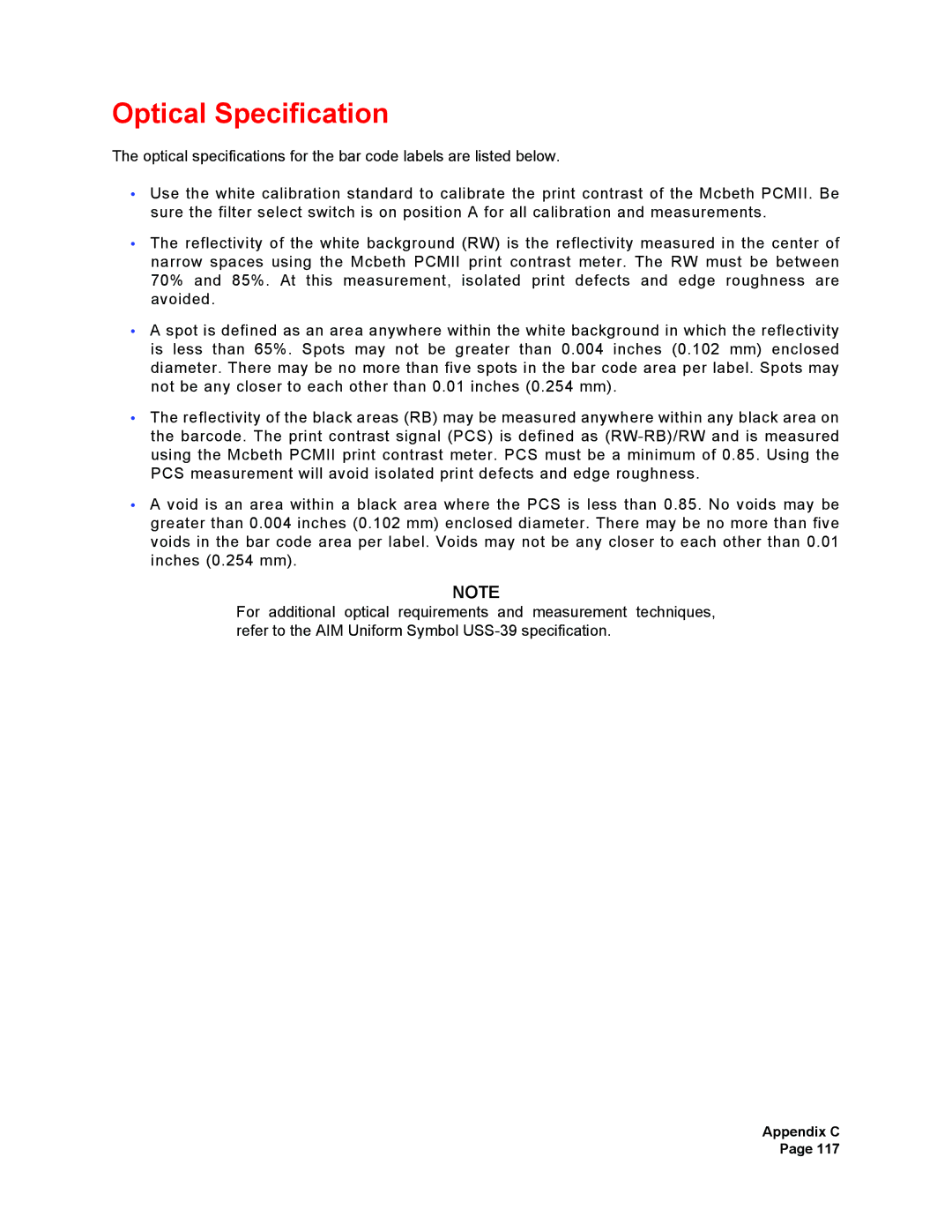Optical Specification
The optical specifications for the bar code labels are listed below.
•Use the white calibration standard to calibrate the print contrast of the Mcbeth PCMII. Be sure the filter select switch is on position A for all calibration and measurements.
•The reflectivity of the white background (RW) is the reflectivity measured in the center of narrow spaces using the Mcbeth PCMII print contrast meter. The RW must be between 70% and 85%. At this measurement, isolated print defects and edge roughness are avoided.
•A spot is defined as an area anywhere within the white background in which the reflectivity is less than 65%. Spots may not be greater than 0.004 inches (0.102 mm) enclosed diameter. There may be no more than five spots in the bar code area per label. Spots may not be any closer to each other than 0.01 inches (0.254 mm).
•The reflectivity of the black areas (RB) may be measured anywhere within any black area on the barcode. The print contrast signal (PCS) is defined as
•A void is an area within a black area where the PCS is less than 0.85. No voids may be greater than 0.004 inches (0.102 mm) enclosed diameter. There may be no more than five voids in the bar code area per label. Voids may not be any closer to each other than 0.01 inches (0.254 mm).
NOTE
For additional optical requirements and measurement techniques, refer to the AIM Uniform Symbol
Appendix C Page 117
